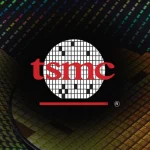No, said the Alabama intermediate appellate court last year (though apparently without a published majority opinion), and last Friday the Alabama Supreme Court declined to hear the case, also without a published opinion, in Ex Parte Rodriguez. But Chief Justice Parker, joined by Justices Bolin, Sellers, and Stewart, dissented—here’s an excerpt:
“[E]ven in a pandemic, the Constitution cannot be put away and forgotten.” Indeed, it is in times of greatest crisis that the rights in the Constitution require the most vigilant defense.
I therefore dissent from this Court’s denial of certiorari review of an important constitutional question: whether requiring criminal-trial witnesses to wear masks covering their noses and mouths while testifying violates the Confrontation Clause of the Sixth Amendment to the United States Constitution. “We have a duty to defend the Constitution, and even a public health emergency does not absolve us of that responsibility.” …
This criminal case was tried in the summer of 2021. A week before trial, Rodriguez moved for an order requiring witnesses to wear clear face shields, rather than masks, while testifying. The circuit court granted the motion. The day before trial, however, the court sua sponte reversed course and required all witnesses to wear masks, asserting that they were necessary because of a then-spreading variant of the COVID-19 virus. The day of trial, Rodriguez again moved to require only face shields, but the court denied that motion. Rodriguez was convicted. The Court of Criminal Appeals affirmed by a vote of 3 to 2, holding in an unpublished memorandum that Rodriguez’s constitutional right to confront witnesses had not been violated….
All constitutional analysis should begin with the constitutional text. “In all criminal prosecutions, the accused shall enjoy the right … to be confronted with the witnesses against him.” …. As the United States Supreme Court has emphasized, in applying the Sixth Amendment’s Confrontation Clause, we must ground our understanding in how the right of confrontation was understood at the time of the founding. The right is a “reference to the right of confrontation at common law.”
The common-law right to confront one’s accusers face to face goes back to the Roman Empire and ancient Israel [through Blackstone and Sir Matthew Hale]. [Details omitted. -EV] … [T]he common-law right of confrontation encompassed a right of “examination,” in which the jury has an opportunity to examine the witness’s countenance and behavior to weigh truthfulness.
After Independence was declared, John Adams drafted the Massachusetts Constitution, which recognized the right of a citizen “to meet the witnesses against him face to face.” Likewise, the Delaware Constitution of 1792 emphasized that citizens had the right “to meet the witnesses in their examination face to face.” Thomas Cooley, a leading expositor of the United States Constitution, explained that the Confrontation Clause requires that “the prosecution procure the presence of their witnesses in open court, where the jury may have opportunity to observe them.” This right was specifically a requirement to confront witnesses “face to face.”
Although our primary authority is the history and text of the Constitution itself, decisions of the United States Supreme Court also provide guidance. In Coy v. Iowa (1988), the Court held that a defendant’s Sixth Amendment right to confront the witnesses against him was violated when two child witnesses who accused the defendant of abuse testified with a screen blocking the defendant’s view of them. The physical presence of the witnesses was insufficient because they were not visible to the defendant. The Court emphasized that “the Confrontation Clause guarantees the defendant a face-to-face meeting with witnesses appearing before the trier of fact.”
The Court has also emphasized an intertwined and critical aspect of the confrontation right: “observation of demeanor by the trier of fact.” The role of the Confrontation Clause is to provide the accused the “opportunity, not only of testing the recollection and sifting the conscience of the witness, but of compelling him to stand face to face with the jury in order that they may look at him, and judge by his demeanor upon the stand and the manner in which he gives his testimony whether he is worthy of belief.”
The Confrontation Clause makes “it possible for the tribunal before whom the witness appears to judge from his demeanor the credibility of his evidence.” The Confrontation Clause helps ensure a fair trial by requiring a clear view of the witness for both the defendant and the jury.
Upon this foundation, a Texas Court of Appeals has held that testimony by a disguised witness is unconstitutional. The Michigan Court of Appeals has held unconstitutional the wearing of a full-face mask while testifying. In response to the COVID-19 virus, a federal district court required witnesses to wear face shields rather than masks while testifying. That court explained: “[A]n unimpeded opportunity to cross-examine adverse witnesses face-to-face and in full view of the jury is core to the Sixth Amendment right of confrontation.”
Applying these same principles, Judge McCool in his dissent below emphasized the importance of juries’ observing the entirety of facial demeanor to determine credibility: “Whether a trembling lip, an involuntary tic of the cheek, or a snarky smile, it [is] imperative that the jury be able to view the face of the witness while he or she [is] testifying.” The United States Court of Appeals for the Third Circuit has emphasized the same principles of credibility: “Demeanor is of the utmost importance in the determination of the credibility of a witness. The innumerable telltale indications which fall from a witness during the course of his examination are often much more of an indication to judge or jury of his credibility and the reliability of his evidence than is the literal meaning of his words.”
Inescapably, a mask covering the nose and mouth obscures the lower half of all facial expressions, when those expressions would enable the trier of fact and the defendant to evaluate the testimony’s authenticity and sincerity.
Therefore, a holding that the Confrontation Clause was not implicated in this case would need to be founded on a conclusion that the masks had no effect on the jury’s observation of the witnesses’ demeanor. But no one appears to be arguing that position. As Judge McCool observed, even cases that have allowed masked testimony have acknowledged that “the masks will eliminate two aspects of demeanor for the jury to consider: movement of the nose and mouth,” Other cases have acknowledged that to a “slight extent masks impinge on [a defendant’s] Confrontation Clause right to see a witness’s full facial expressions.” …
The Court of Criminal Appeals concluded in its unpublished memorandum that “‘requiring [masks] is justified by important public policy interests to protect the health and safety of those in the courthouse while allowing court functions to proceed during a pandemic.'”There are two fundamental problems with that rationale. First, the United States Supreme Court has held that an infringement of the confrontation right is permissible only when the “denial of such confrontation is necessary to further an important public policy.” But under that strict-scrutiny framework, “[t]he requisite finding of necessity must of course be a case-specific one: The trial court must hear evidence and determine whether” the infringement is necessary. Thus, before any exception to the confrontation right is made, the burden is on the State to present evidence that it is necessary, and the trial court must make a case-specific finding of necessity based on that evidence. Nothing is taken for granted, and the government must empirically demonstrate the necessity of the infringement on the right.
As Judge McCool explained, “the State bore the burden of proving that any measures imposed were necessary to further the public policy under consideration.” Here, however, “the trial court did not make any individualized findings as to this public policy or the necessary remedy in furtherance of that policy, and no evidence regarding this issue was presented or considered by the trial court.” In fact, there is no indication that the State even asked for this measure to be imposed; the circuit court imposed it on its own initiative. As Judge Minor highlighted, although our Court had declared a COVID-19 state of emergency for the Judicial Branch of Alabama, that declaration had ended three weeks before the trial in this case. Because there was no individualized fact-finding, the circuit court’s exception to the Confrontation Clause cannot be justified under the strict-scrutiny framework articulated in Craig.
Second, as Judge Minor pointed out below, there is a strong argument that the above-discussed method of strict scrutiny for exceptions is no longer good law. After Craig, the Supreme Court declared in Crawford that it was not willing to “replac[e] categorical constitutional guarantees with open-ended balancing tests” based on “amorphous notions of ‘reliability.'” That was because “[t]he text of the Sixth Amendment does not suggest any open-ended exceptions from the confrontation requirement to be developed by the courts.” Rather, the Confrontation Clause is “most naturally read as a reference to the right of confrontation at common law, admitting only those exceptions established at the time of the founding.” Thus, the sole question to ask to determine whether a practice that implicates the protections of the Confrontation Clause is permissible is whether an exception existed at the time of the founding under the common law.
I believe that this method, rather than judicially created tiers of scrutiny, is the best mode of constitutional analysis. Like the scope of rights under the Second Amendment or the First Amendment, the scope of the confrontation right under the Sixth Amendment must be determined primarily by looking to the history and tradition that define the content and contours of the right. Our role is not to “balance” constitutional safeguards like mere “interests,” but to enforce them as definitive protections of concrete rights. Here, none of the federal opinions permitting masked testimony or the Court of Criminal Appeals’ memorandum discusses any historical support for such an exception.
In short, the Confrontation Clause protects a defendant’s right to have witnesses’ faces visible to the defendant and the jury. The voices of our common-law tradition, as well as decisions of the United States Supreme Court, strongly support this conclusion. Witnesses’ wearing of masks that partly obscure the face inevitably impinges on that right, as Judge McCool thoroughly explained. In order to countenance such an impingement, we ought to accept “only those exceptions established at the time of the founding.” If we had granted certiorari review, the State and Rodriguez would have had an opportunity to provide evidence of such a historical exception.
Finally, I emphasize that this case is not about the guilt or innocence of criminal defendants. It is about the right of every American to be confronted by the witnesses against him face to face. And it is about the right to have the jury see each witness’s face and decide whether that witness is telling the truth. Moreover, this case is not about the danger of the COVID-19 virus or the best methods to mitigate it. Like the Justices of the United States Supreme Court, the members of this Court and our courts of appeals “are not public health experts, and we should respect the judgment of those with special expertise and responsibility in this area.” But we have “one Confrontation Clause (the one the Framers adopted and Crawford described).” We do not have the original Confrontation Clause for ordinary times and a “special, improvised, Confrontation Clause” for times of crisis—whether of heinous crimes, political tumult, or public-health emergencies. In all cases—all cases, even during a pandemic—we are governed by the same Constitution.
The post Do Criminal Trials with Mask-Wearing Witnesses Violate the Defendant’s Right to Confront Witnesses? appeared first on Reason.com.






